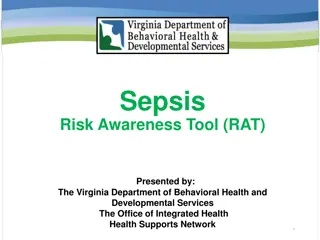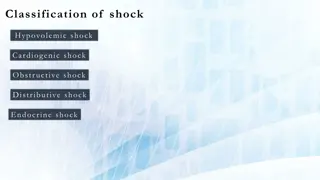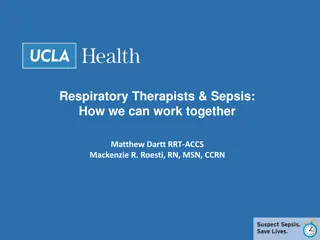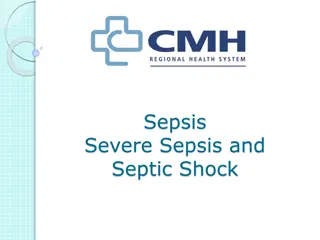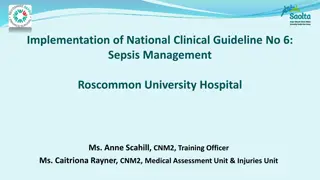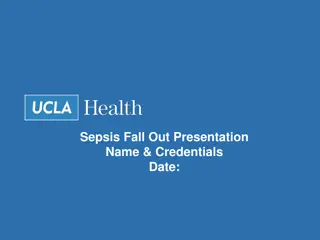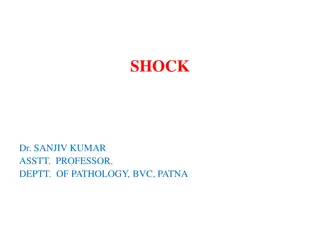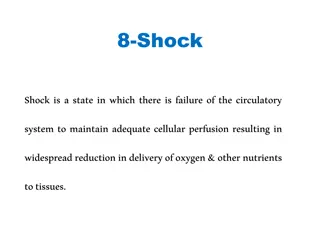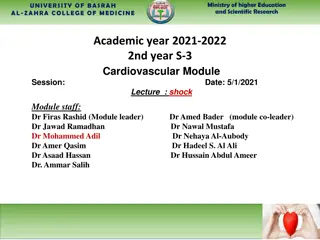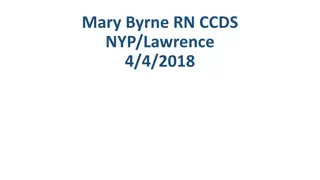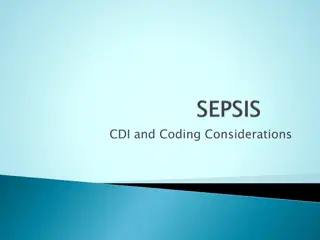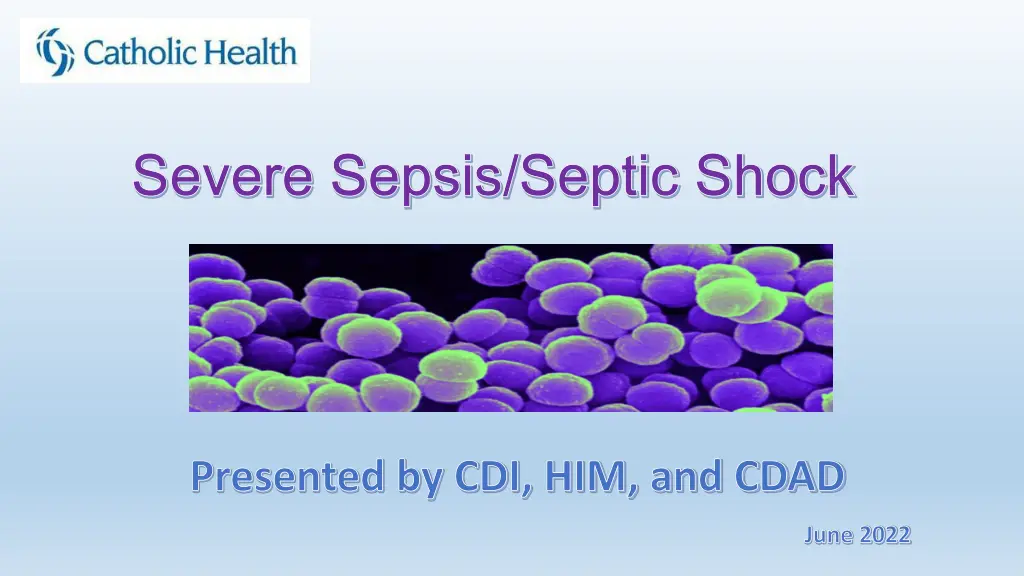
Understanding Denials and Appeals Process in Healthcare
Learn about the denial and appeals process in healthcare, including how denials are handled, the appeal process, and the outcomes of appeals. Discover how healthcare organizations like Catholic Health work with insurance carriers to address denied claims effectively.
Download Presentation

Please find below an Image/Link to download the presentation.
The content on the website is provided AS IS for your information and personal use only. It may not be sold, licensed, or shared on other websites without obtaining consent from the author. If you encounter any issues during the download, it is possible that the publisher has removed the file from their server.
You are allowed to download the files provided on this website for personal or commercial use, subject to the condition that they are used lawfully. All files are the property of their respective owners.
The content on the website is provided AS IS for your information and personal use only. It may not be sold, licensed, or shared on other websites without obtaining consent from the author.
E N D
Presentation Transcript
Severe Sepsis/Septic Shock Severe Sepsis/Septic Shock Presented by CDI, HIM, and CDAD June 2022
Denials At Catholic Health denials are worked by the Clinical Denials and Appeals Department (CDAD) What is a Denial? Every patient has a claim sent to their Insurance Carrier which specifically outlines all care rendered for treatment of Principle diagnosis, secondary diagnoses, and any procedures. The insurance company reviews the claim and all diagnoses submitted, then performs a thorough review of the medical record to ensure all diagnoses are well supported, monitored, and treated accordingly. When insurance company reviews the record and finds lack of clinical support, conflicting documentation, lack of treatment for a diagnosis etc., they notify the hospital organization via a denial letter that they are removing a diagnosis from the claim and state their reasons for doing so.
Appeal Process Denial letter is reviewed by Clinical Denials and Appeals Team, followed by thorough review of the medical record. Along with assistance from the Physician Advisor, an appeal letter is generated stating our case as to why Catholic Health feels the diagnosis is valid and supported in the medical record. The Appeal letter includes specifics taken right from the documentation in the medical record along with all supportive clinical indicators. It is sent to the Insurance Carrier within 30 days of receipt of denial letter. No Appeal Process Denial letter is reviewed by the Clinical Denials and Appeals Team, followed by thorough review of the medial record. With assistance from Physician Advisor, if the reviewed record does not have the proper documentation and clinical support to validate the denied diagnosis, Catholic Health does not send an appeal to the Insurance Carrier. In other words, Catholic Health is in agreement with the Insurance Carrier that the stated diagnosis is not clinically supported.
If Appealed, Appeal letter is sent to Insurance Carrier. If the Insurance Carrier: Disagreeswith Catholic Health Agreeswith Catholic Health Original diagnosis that was denied is re-instated and Catholic Health receives full value for resources associated with patient encounter. Catholic Health receives the appropriate severity of illness, risk of mortality, and more accurate length of stay for patient encounter. More accurate reflection of the Hospital s CMI (Meaning your are caring for very sick patients) Catholic Health can choose to do no further appeal, and the diagnosis is removed from the patient s claim. Catholic Health can choose to try second review with the insurance company. If the second review is still upheld Catholic Health can choose to send for a third review to an Outside company. The Outside Company does a thorough review of the patient s record hearing both sides, and makes a non-biased decision on the validity of the diagnosis. Whomever the decision is in favor of, the other must pay the Outside Company for their services.
When an Appeal : IS LOST Diagnosis is removed from patient s claim. This indicates you never took care of patient for this during their stay. This leads to Catholic Health returning resources to insurance company. This leads to lowering of patient s SOI/ROM for said visit, which also lowers what their length of stay should have been. This lowers the Hospital s CMI (Case Mix Index). A low CMI indicates you are not caring for very sick patients.
We Are Here to Help You! CLINICAL DENIALS Specialists (CDAD) CDI Specialists CODING Specialists Review the medical record and all documentation while patient is in the hospital. Review the medical record and all documentation after the patient is discharged. Review the closed records documentation after the Insurance Carrier has denied a diagnosis. Place queries/talk with the Provider to obtain clarification, more specific documentation and to alert Provider of conflicting and/or inaccurate documentation. Final codes record and sends to billing department for final claim to the Insurance Carrier. Team up with the Physician Advisor to effectively determine medical necessity, to locate and identify crucial medical record documentation in order to support the denied diagnosis and Appeal to the Insurance Carrier. Also query if there is inaccurate, conflicting documentation or if further clarification is needed in the medical record. Goal is to obtain a complete and accurate record before the patient is discharged. Goal is to obtain a complete and accurate record.
Encounters With Denial Letters Received
SepsisDocumentation Case Scenario 1 Patient with Myasthenia Gravis, permanent trach & vent dependent presented with dyspnea and body wide pain. Has known LE Venous Ulcerations. In ED, RR 22-24, HRs 95-100, WBC 21.7, Na 119, Creatinine 2.84 (No baseline SCr documented); Admitted with Cellulitis of Buttock, Cellulitis of lower leg, Sepsis and Acute Renal Failure. Patient initially admitted to the ICU, and was hospitalized for 16 days. Original DRG Revised DRG after a Second Level Review Denial DRG: 720 (Sepsis & Disseminated Infections) SOI: 4 ROM: 4 Claim total charges: $73, 109.91 Original Reimbursement: $50,128.53 DRG: 383 Cellulitis and Other Skin Infections SOI: 4 ROM: 3 Revised Reimbursement: $43,758.11 Recovery Amount Due: $ 6, 370.42 DRG denial was based on: 1. Lack of consistent documentation in the medical record: A. No documentation of supporting indicators for Sepsis: only sepsis is documented in H&P. B. Sepsis then not documented until 8 days later, as a free text note never incorporated in daily progress notes. C. Sepsis not documented again until another 8 days later (which is day of DC). Not listed as a discharge diagnosis, only a mention in the Hospital Course. 2. Physical Exam Findings not in acute distress, cooperative pleasant upon admission. 3. Physician not linking the organ dysfunction to Sepsis and acute renal failure only documented in the H&P
Sepsis Documentation Case Scenario 2 Patient with chronic CHF, HTN, CAD, & COPD presented with dyspnea and cough. ED Vitals: 104/41- 52-18; Temp 95.7; 88% on r/a 2L O2 96%. WBC 14.2 with left shift; lactate 2.5, SCr 2.46 (baseline SCr 1.8). Chest Xray revealed opacities RML & RLL and mild perihilar vascular congestion. BNP 602; Troponins 393, 482. Admitted for Severe Sepsis 2/2 Pneumonia, AKI, Acute on chronic systolic CHF, Acute hypoxic respiratory failure. Hospitalized for 5 days. Cardiology Consult: Type 2 MI due to demand Original DRG Revised DRG after Denial DRG: 871 SOI: 4 ROM: 4 Claim total charges: $15,724.61 Original Reimbursement: $8,083.41 DRG: 193 Simple Pneumonia SOI: 3 ROM: 3 Revised Reimbursement: $6,091.20 Recovery Amount Due: $1,992.21 DRG denial was based on: 1. Lack of consistent and supportive documentation in the medical record: A. Admitting Provider who wrote admission order for Sepsis did not include Sepsis in the H&P B. No IVFs or Antibiotic in the ER. Severe Sepsis Protocol not initiated. Patient did not receive IV antibiotics till 5 hours after admission. C. No treatment for AKI (no IV Fluids given, and no contraindication to IVFs documented); Maintained on 2L O2 entire hospital stay and no treatment for acute component of CHF remained on home dose of po Bumex D. DC Summary: Sepsis with acute organ dysfunction no organ dysfunction listed as a diagnosis. Hospital course informs patient required cautious IV fluid resuscitation, however, no order for IVF, and no documentation that patient received any IVFs (inconsistent documentation) 2. Physical Exam Findings: ER MD non-ill/non-toxic appearing : 1stPN: I feel pretty good , pt. not in acute distress , patient euvolemic on exam , Resp Status stated by all pulmonary effort normal, no respiratory distress ; WDL , no SOB . Only had one episode of desaturation which was on ambulation. 3. Physician not linking the organ dysfunction of Type 2 MI to Sepsis
Sepsis Documentation Case Scenario 3 81 y/o female with history significant for cholangiocarcinoma, Primary Biliary Cholangitis who was diagnosed with UTI 7 days PTA, treated with a course of Bactrim. Failed outpt treatment & presented to hospital with c/o of fever, weakness. Febrile with a T 101.2 F & hypotensive with BP 99/56 - 82/49. Despite her recent 1 week course of antibiotics her UA was notable for pyuria (11-20 WBC) and she was complaining of urgency and pelvic discomfort. Admitted with Sepsis secondary to UTI and hospitalized for 3 days. Proposed DRG by Insurance Original DRG Final DRG after Appeal Won DRG: 872 (Sepsis or Severe Sepsis without MV >96hrs without MCC) SOI: 3 ROM: 3 Claim total charges: $9,908.33 Original Reimbursement: $6,265.74 DRG WIN was based on: 1. Consistent and supportive documentation in the medical record: A. Sepsis was clearly, consistently and appropriately diagnosed by the admitting provider, in the daily progress notes along with status updates. Discharging provider documented Sepsis secondary to UTI present on admission as discharge diagnosis in the DC Summary. B. Admitting Provider Sepsis 2/2 UTI with fever, hypotension, and bandemia .. Plan IVF resuscitation, Ceftriaxone, Flagyl C. Sepsis secondary to UTI documented in daily progress notes with status updates Sepsis improving- T max 37.8, BP low but stable, bandemia resolved ; Urinary urgency/frequency improving : Will stop IVF s given CHF hx and patient taking po Minimal cut and paste progress note updated and accurately reflected patient s response to treatment rendered. D. Sepsis protocol was followed, patient received 3000ml IV fluid bolus and remained on IVF s for 48hrs. IV abx (ceftriaxone & flagyl). E. Physical Exam Findings: fever , weakness ; feeling better but appears very fatigued 2. Physician related the hypotension to Sepsis using with . Can also use terms such as due to , related to , as evidence by DRG: 690 (Kidney and Urinary Tract Infections without MCC) SOI: 2 ROM: 2 Revised Reimbursement: $2,873.15 Recovery Amount Due: $3,392.59 DRG: 872 (Sepsis or Severe Sepsis without MV >96hrs without MCC) SOI: 3 ROM: 3 Insurance Reversal: $3,392.59 Final Reimbursement: $6,265.74
So, When it Comes to the Patients Medical Record: Your documentation is looked at by many to make sure it is accurate, valid, and complete. Be cautious when using cut and paste. You do not want to carry forward any inaccurate or old information. It can be seen by all. Make sure your physical exams give a clear picture of what the patient looks like at the time you are completing it. Be sure to individualize and update your documentation daily to ensure the documentation is most accurate.
Redefining Sepsis Severe Sepsis and Septic Shock impact approximately 50,000 patients in NY State every year. Before the implementation of NYS Sepsis Care Improvement Initiative, 30% of these patient s, on average, died from this syndrome.
NYS Sepsis Care Improvement Initiative Surviving Sepsis Campaign Early detection of severe sepsis combined with timely and appropriate interventions saves lives! NYS Regulations (Sections 405.2 and 405.4) require all NYS Hospitals that provide care to patients with Severe Sepsis develop and implement a Severe sepsis protocol. Hospitals were able to develop their own protocols, however, Hospitals were given minimal requirement instructions: 1. Had to be based on evidence - based guidelines 2. Have targeted timeframes for critical interventions A. Measurement of a blood lactate level B. Collection of blood cultures C. Administration of broad spectrum antibiotics D. Fluid administration E. Fluid status assessment F. Vasopressors and re-measurement of lactate for eligible patients
NYS Sepsis Care Improvement Initiative Surviving Sepsis Campaign Each Hospital was required to submit their Severe Sepsis/Septic Shock Protocol to the NYS Department of Health for review followed by implementation of the protocol Every Hospital in NYS that cares for Severe Sepsis patients is required to report data on all diagnosed cases of severe sepsis/septic shock The NYS Department of Health then aggregates this data and publishes this data for all to see. CMS requires Hospitals to abstract specific data on Severe Sepsis/Septic Shock patient s and also publically reports this data. It is a core measure.
Early recognition/Diagnosis Pathway Severe Sepsis/Septic Shock Is there a possibility or confirmed infection Does not meet criteria to proceed further Reassess as needed NO Severe Sepsis/Septic Shock Reassessments Completed: ED: Every 2 hrs In patient: Q shift YES Patient has 2 or more of the following present: Temperature > 38.3 C (100.9 F) or < 36.0 C (96.* F) Pulse > 90 bpm Respiratory Rate > 20/min WBC > 12 or < 4 or > 10% bands Protocol NO Assess and document mental status on all patients in the ED YES WITHIN ONE HOUR of recognition DRAW LACTATE ACID CMP COAGS CBC with diff Begin treating the Infection Is Organ Dysfunction Present WITHIN ONE HOUR Evaluate signs for organ dysfunction Start as soon as possible not to exceed THREE HOURS Administer Fluids 500ml q 15 min to a total of 30 ml/kg or MAP > 65 Obtain blood cultures Start antibiotics VS q 15 min x 90 min then q 60 min Repeat lactate in 3 hours Start Vasopressors if MAP </= 65 after fluids See Order Sets Severe Sepsis (SIRS + organ dysfunction) Hypotension (BP < 90/60 or MAP < 65mm/Hg Areas of mottled skin Creatinine > 2.0 mg/dl Platelet count < 100,000 Acute renal failure or urine output 0.5mg/kg/hr Hepatic Dysfunction Bilirubin > 2 or INR > 1.5 Respiratory Failure Metabolic Encephalopathy Lactate >2 YES NO Document the source of infection and treat Reassess for signs of Organ dysfunction
Severe Sepsis/Septic Shock Protocol continued Early recognition/Diagnosis Pathway Severe Sepsis/Septic Shock Evaluate for Septic Shock WITHIN SIX HOURS Septic Shock Achieve hemodynamic stability with Fluids and Vasopressors Consider CVP Line if: MAP< 65 despite fluid resuscitation or lactic acidosis persists Obtain Source Control for Infection Repeat Physical Exam Severe Sepsis PLUS Refractory Hypotension BP <90/60 or MAP < 65 despite adequate fluid resuscitation Lactic Acid >/= 4
CMS Severe Sepsis Core Measure Dashboard Catholic Health Overall
Out With the Old! No More Sepsis in the documentation! 2 or more SIRS + Pneumonia = A Diagnosis of Pneumonia 2 or more SIRS + UTI = A Diagnosis of UTI 2 or more SIRS + COVID = A Diagnosis of COVID 2 or more SIRS + BLE Cellulitis = A Diagnosis of BLE Cellulitis DOCUMENT THE INFECTION and TREAT.
In With the NEW! (SIRS + Infection + Organ Dysfunction) = Severe Sepsis (Make sure to link organ dysfunction with a statement!! Listing diagnoses in problem list is not sufficient) 2 or more SIRS + Pneumonia + Acute Respiratory Failure = SEVERE SEPSIS SECONDARY TO PNEUMONIA WITH ASSOCIATED ACUTE RESPIRATORY FAILURE (Comment: Meets severe sepsis as evidence by fever, leukocytosis, tachycardia, pneumonia, with acute respiratory failure) 2 or more SIRS + UTI + Acute Renal Failure = SEVERE SEPSIS SECONDARY TO UTI WITH ASSOCIATED ACUTE RENAL FAILURE (Comment: Meets severe sepsis as evidence by tachycardia, fever, tachypnea, leukocytosis, + UTI, with acute renal failure) 2 or more SIRS + BLE Cellulitis with Metabolic Encephalopathy = Severe Sepsis secondary to BLE Cellulitis with associated metabolic encephalopathy and elevated lactate (Comment: Meets Severe Sepsis as evidence by leukocytosis, fever, tachycardia, BLE Cellulitis, with elevated lactate and metabolic encephalopathy)
Other Types of Organ Dysfunctions that would need to be linked if due to Severe Sepsis Elevated troponins/Demand mediated myocardial ischemia Disseminated Intravascular coagulation (DIC) Acute Respiratory Distress syndrome (ARDS) Hyperglycemia (Blood sugar > 140 in non diabetic patient s) Arterial hypoxia Adrenal Insufficiency (hyponatremia and hyperkalemia) Procalcitonin 2 x the standard CRP 2x the normal Lactate 4 or above = lactic acidosis this is consistent with, but not diagnostic of septic shock Elevated ALT/AST 2x the normal
Documentation: Is the only way to tell the patient s story- from presentation to the hospital to discharge. Determines the severity of illness, intensity of services, and the quality of care provided. Ensures that all the information within the health record is clinically valid and supports informed medical decision making. Impacts CMI (Case Mix Index) and risk adjustment Is viewed by other Health Care Professionals, and the patient themselves, so it is important that the patient s disease burden is accurately captured in all healthcare settings. If it is not documented, it wasn t done, didn t exist, or didn t happen.
Documentation Tips If Severe Sepsis is suspected, make sure Severe Sepsis/Septic Shock Protocol is initiated and followed Order the Sepsis Bundle & meet targeted timeframes as these are reportable to CMS. For any reason if targeted interventions are not done due to a contraindication, please document this (ie.. Limited fluid bolus due to concern for acute CHF) SIRS Criteria + Organ Dysfunction with known/suspected infection: make sure SIRS & Organ dysfunction cannot be linked to causes other than Severe Sepsis. If SIRS is due to other causes, then you are not going to be documenting Severe Sepsis. Make sure the documentation supports an overall picture of Severe Sepsis; Does your patient look sick/toxic? Infection source needs to be linked to severe sepsis along with the organ dysfunction. (ie. Severe Sepsis secondary to Pneumonia as evidence by: (ie. Tacypnea, fever, leukocytosis and associated acute hypoxic respiratory failure). Be cautious: Does your physical exams correlate with the diagnosis of Severe Sepsis. We are finding documentation of non-septic, non-toxic appearing in general appearance of physical exam, and then documentation of Severe Sepsis as the Primary Diagnosis.
Documentation Tips Be sure to include Severe Sepsis diagnosis in your daily progress notes with status update (ie.. Improving, Resolving, resolved). Consistent documentation is key! Be sure to validate/include supportive clinical indicators in your documentation for your organ dysfunction Remember to link the organ dysfunction to the Severe Sepsis (ie. Acute hypoxic respiratory failure secondary to Severe Sepsis due to Pneumonia) Be sure to capture Severe Sepsis in the Discharge Summary as a Discharge Diagnosis along with all secondary diagnosis: ie.. Pneumonia, acute hypoxic respiratory failure, acute renal failure, hyponatremia, etc. Includeall the supportive clinical indicators, treatments given, and patient s response to treatment in the Hospital Course. Make sure to capture the true picture of patient s hospital stay. No Organ Dysfunction, No Severe Sepsis Only DOCUMENT THE INFECTION SOURCE AND TREAT. Our Organization will not be DOCUMENTING SEPSIS.
Conclusion/Take home points Organ Dysfunction NEEDS to be present in order to document a Severe Sepsis diagnosis. Sepsis or 2 SIRS and a source of infection should NOT be documented. Instead just document the infection itself (ie. Pneumonia). Organ dysfunction needs to be linked to the Severe Sepsis in the documentation as a statement. Severe Sepsis should be supported with appropriate physical exam findings. Does your physical exam reflect a patient who is ill/toxic appearing etc. Be cautious when utilizing Cut and Paste do not carry forward inaccurate or old information. Consistent documentation of Severe Sepsis is vital in the daily progress notes (ongoing, resolving, resolved) and must be carried through in to the DC Summary as a Discharge Diagnosis
Please feel free to contact us with Questions Clinical Documentation Integrity(CDI) Deborah Mazur Manager, Clinical Documentation Integrity Office #: (716) 601-3752 Email: dmazur@chsbuffalo.org Coding Education Quality Auditing Justine Whitman Manger, Coding Education Quality Auditing Inpatient Office #: (716) 447-6581 Email: Jnolder@chsbuffalo.org Clinical Denials and Appeals Department (CDAD) Brandon Schulz-Koller Director, Documentation Cycle Integrity and Improvement Office #: (716) 601-3602 Email: bkoller@chsbuffalo.org





